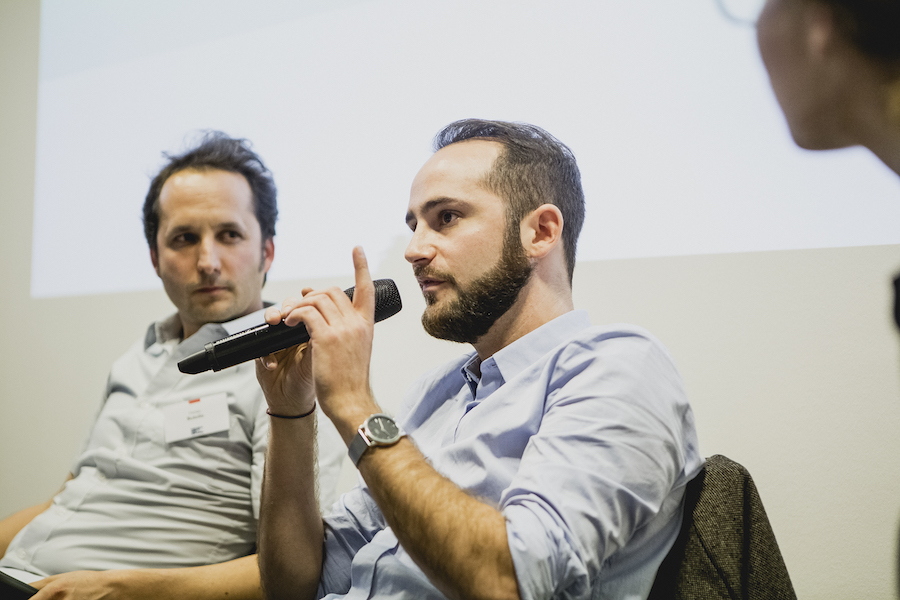Reclaiming the digital space: Fighting right-wing extremists online

The rise in far-right ideology globally over the past decade has coincided with a surge in reports of right-wing extremist content online in the United Kingdom. Investigations into the murder of Labour Party Member of Parliament in Great Britain Jo Cox revealed that her killer had read some of that content online and had links to right-wing extremist groups.
The fear of more violence will not abate if the trend continues. With internet penetration rates that continue to soar worldwide, the danger of a far-right extremist group organizing to weaponize internet culture is sounding all possible alarms. There is a need to develop strategies that can counter the online mobilization and collaboration by radical movements across the European Union and the United States.
At a Friedrich-Ebert-Stiftung-supported meeting of a global international network of scientists, civil society activists, and public service affiliates organizing against right-wing extremism, Jacob Davey was among the speakers highlighting the tactics of alternative technology and digitalization. On occasion of the meeting that took place in May in the United States, FES Connect spoke with Davey, research manager at the Institute for Strategic Dialogue, on the state of right-wing extremism online and how to fight it.
In what way has the internet fuelled right-wing extremism in the United Kingdom and globally?
Our research has demonstrated a number of clear areas in which online communication is helping to fuel the rise of right-wing extremism: by facilitating the dissemination of extremist material to new constituents, fuelling radicalization; through the building of ideological consensus, strengthening movements; and through the mainstreaming of fringe ideological points, shifting the goal posts of online discussion.
By facilitating cross-border collaboration between extremist groups, we are seeing social media fuel the internationalization of extreme right-wing movements. We now have a situation where the Identitarians can make common ground with British street protest movements and North American YouTube personalities. And this is fuelled by online communications channels which enable them to broadcast their activities to a global audience. Through this process, we are witnessing the rise of increasingly emboldened far-right activists who are using sophisticated communications strategies to enable the growth of a counterculture.
How do right-wing extremist organizations operate online? Can you discern a changing trend in the online strategy they apply when compared with other violent extremist organizations?
In general, there is a lot of commonality in the ways extremist groups operate online. They deploy a clear strategy for radicalizing and recruiting individuals, disseminating propaganda to market their ideas to new constituents, before furthering the radicalization process by bringing new members into closed communities and grooming these individuals through direct interaction. [This] dynamic is something which is common to both Islamist and extreme right-wing groups.
Platforms, such as Gab.ai allow for extremist communities to flourish, communicating in a fashion which would see them become blocked on mainstream platforms.
There are, however, a couple of areas which mark the extreme right as unique. One example (which can be observed in Islamist communities, although on a much smaller scale) is through the creation of alternative social media platforms which cater specifically to far-right communities. These platforms, such as Gab.ai, which function much in the same way as Twitter, allow for extremist communities to flourish, communicating in a fashion which would see them become blocked on mainstream platforms.
Another area where far-right strategy appears to be moving ahead is through the adoption of tactics which are comparable to those used by state disinformation units. We saw this in last year’s German elections, where highly organized networks of trolls actively coordinated to disseminate material designed to slander their political opponents and radicalize individuals in an attempt to boost the Alternative for Germany [AfD] party at the polls.
How is online engagement changing interactions between supporters and the character and actions of right-wing extremist organizations?
Online engagement provides the opportunity for anyone to get involved in far-right activism. You can be a young man in Australia and donate to the Identitarian cause or harass a British journalist without ever having to leave the comfort of your home. This dynamic is important, as it is providing extremists with the opportunity to create common "playbooks" for what does and doesn’t work in online activism. As it is now increasingly viable for an individual to have a real-world impact through their virtual activities, we are seeing a trend whereby internet culture is fusing with extreme right-wing activism.
As a result of this cultural fusion, we are increasingly seeing a disturbing trend whereby neo-Nazi activists, such as Andrew Anglin of the Daily Stormer, are deliberately leveraging internet culture to radicalize younger and younger audiences.
We are long past the conclusion that the internet and social media are a sphere in which social and political subjects are also shaped. Facebook has introduced community standards and algorithms across its platforms that can push down or filter hate speech and racist slurs. How is technology your ally in fighting right-wing extremist propaganda online?
Technology can be used in a number of ways to push back against right-wing extremism, for example through facilitating research which allows us to better understand the strategies of extremist groups.
Communities like the one created around the Online Civil Courage Initiative can push back against the divisive, polarizing actions of extremist groups.
One of the clearest opportunities lies in providing a mechanism for the creation of communities who can push back against the divisive, polarizing actions of extremist groups. An example of this is the Online Civil Courage Initiative, which connects civil society organizations from across Germany, France and the UK, allowing them to share knowledge and insights as they campaign. In many ways, I see this as one of the clearest ways technology can be leveraged for good. Extremist groups are adept at creating virtual countercultures, and it is up to us to create equally compelling movements which speak to our shared values and dispel hateful rhetoric.
The scandal emerging from the harvesting of Facebook user data by Cambridge Analytica without the users’ consent pressed social media giants to pay more attention to privacy and free speech. What is the greatest challenge to regulating the digital space and closing it off to extremism? Can it be done without threatening free and equal participation and while inspiring global democratic organizing?
Regulation of extremist material online is a complex situation. And I feel the greatest challenge lies in reactive policy-making, which doesn’t fully consider the implications of such activity. We are increasingly seeing calls to police online communities through the removal of material which is hateful, offensive or associated with extremist organizations. Whilst in many contexts, there are clearly defined legal parameters which govern this, such as Holocaust denial material in Germany. There are also a number of grey areas where it is more difficult to reach a clear consensus about the nature of a piece of material. And the fact that there are various legal contexts at play hinders our ability to set common objectives in this space. Furthermore, there is a lack of consensus across stakeholders on what success looks like in tackling the threat—what are the objectives, what is the theory of change leading us to prioritize certain types of violent or explicit content on mainstream platforms, and how are we measuring how well we’re doing at reaching those goals?
The greatest challenge to regulation of extremist material online lies in reactive policy-making. A better approach lies in matching regulation with concerted efforts to grow civil, positive activist communities online.
This prioritization of removing the most egregious violent content from mainstream platforms has overlooked other potential responses that do much less to threaten rights of speech online, such as demonetization of hateful content or the boosting of positive "counter" content. Banning extremists from mainstream platforms limits the amount of individuals who are exposed to their divisive rhetoric. However, these individuals are adept at finding new places to disseminate their views. And such actions embolden the supporters of extremist groups by compounding their grievances. Furthermore, it allows these groups to highjack legitimate arguments around freedom of speech, potentially bringing new members to their ranks. I feel a better approach lies in matching regulation with concerted efforts to grow civil, positive activist communities online.
What would be your number-one advice to defuse attacks by right-wing hatemongers online, whether it be an individual or an organization targeted by the attack?
Unfortunately, there isn’t a silver bullet when approaching these issues, and not one organization or individual holds the key. Instead, we should focus on an approach which combines governmental, grass-roots, tech and media responses, building a global coalition of willing activists who work in a concerted fashion to depolarize communities and reclaim the debate from extremists.
###
For more information on the work by FES on the Against Right-Wing Extremism Project contact Franziska Schroeter and visit the dedicated project page (link in German).
About FES Connect
Connecting people, in the spirit of social democracy, we source and share content in English from the German and international network of the Friedrich-Ebert-Stiftung.








